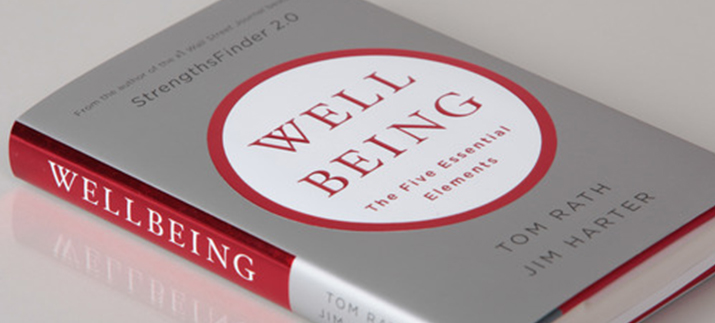
01 Jun Well Being, What Is It?
You may have heard (or even used) the term “wellbeing”, but what exactly does it mean? Well, there’s a rich pool of data from the Gallup organization that clarifies the term for us. From millions of data points collected over many years of research done around the globe, Gallup has boiled Wellbeing down to 5 essential elements. These elements do not include every nuance of what’s important in life, but they do represent five broad categories that are essential to most people.
1. Career Wellbeing
The first element is about how you occupy your time… or simply liking what you do every day: your Career Wellbeing. People with high Career Wellbeing wake up every morning with something to look forward to do that day… they have a purpose. They also have the opportunity to do things that fit their strengths and interests. They have a deep purpose in life and a plan to attain their goals. In most cases, they have a leader who motivates them and makes them enthusiastic about the future, and friends who share their passion. Purpose and Career Wellbeing are the most impactful when it comes to your overall wellbeing – more impactful than your physical health!
2. Social Wellbeing
The second element is about having strong relationships and love in your life: your Social Wellbeing. People with high Social Wellbeing have several close relationships that help them achieve, enjoy life and be healthy. They are surrounded by people who encourage their development and growth, accept them for who they are, and treat them with respect.
3. Financial Wellbeing
The third element is about effectively managing your economic life: your Financial Wellbeing. People with high Financial Wellbeing manage their personal finances well and spend their money wisely. They buy experiences instead of material possessions, and they give to others instead of always spending on themselves. At a basic level, they are satisfied with their overall standard of living.
4. Physical Wellbeing
The fourth element is about having good health and enough energy to get things done on a daily basis: your Physical Wellbeing. People with high Physical Wellbeing manage their health well. They exercise regularly, and as a result, they feel better. They make good dietary choices, which keeps their energy high throughout the day and sharpens their thinking. They also get enough sleep to process what they have learned the day before, and to get a good start on the next day.
5. Community Wellbeing
The fifth element is about the sense of engagement you have with the area where you live: your Community Wellbeing. People with high Community Wellbeing feel safe and secure where they live. They take pride in their community and feel that it’s headed in the right direction. This often results in their wanting to give back and make a lasting contribution to society. These people have identified the areas where they can contribute based on their own strengths and passions, and they tell others about these interests to connect with the right groups and causes.
So, how do you assess your wellbeing? Which areas of your wellbeing are strong and thriving? Which ones need a little more attention? How are you supportive to those around you in their journey toward better well being?
If you need ideas or support, don’t hesitate to reach out to the YOC Wellness Office. Nathan can help connect you to resources, from books and videos to one-on-one health coaching. He can be reached at ntaylor@yocinc.org.


